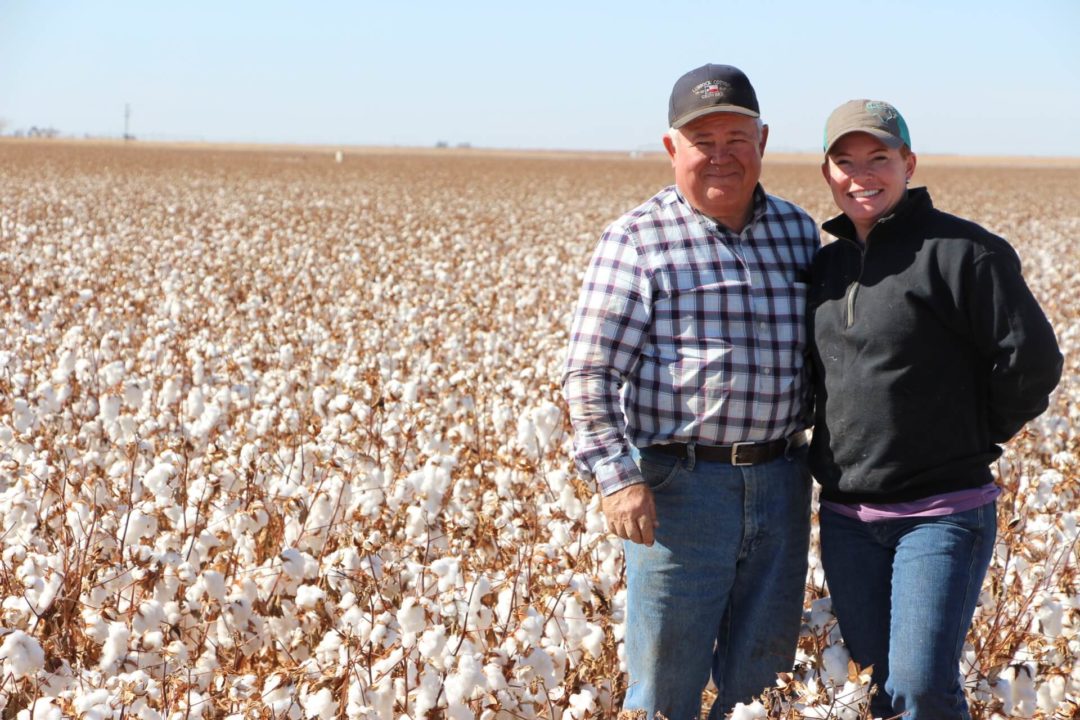Flying Into Cotton
Mark Kimmel flew into cotton farming. Literally. “I soloed when I was 15, and got my pilot’s license when I was 16. I started crop dusting when I was 18 after I got out of high school,” he says. “I did that for years. My dad owned Kimmel Aviation in Houston, MS, and I grew up on a farm.”
Kimmel Aviation was an ag-plane repair shop and his dad Stewart also sold Grumman Ag Cats and Cessna Ag Trucks.
“Even my mother Dorothy flew,” says Kimmel. “And she had an agricultural aviation insurance business.”
Kimmel grew up on a farm, and farming remains a major part of his life.
“I came to Itta Bena in 1986,” he says. “My daddy-in-law had a flying service and a farm and he wanted to slow down. So I came here. I’ve always wanted to do exactly what I’m doing.”
Itta Bena Plantation is located near Itta Bena, MS, just west of Greenwood. It now spans 3,000 acres that are 100% irrigated. “It’s mostly furrow irrigation, but we do have three center pivots,” Kimmel says.
In 2011, his farm was evenly split between corn, soybeans and cotton. He occasionally grows rice, but didn’t in 2011.
“Every third year, corn goes on cotton ground, but acreage moves every year,” says Kimmel. “We also like to rotate soybeans with rice when we have rice. But corn prices were better than rice, so we stayed with corn.”
All of his acreage is minimum-till, and has been for 20 years, Kimmel says. He uses a paratill in the fall then rows up.
When it’s time to burndown in the spring, Kimmel uses Roundup and 2,4-D. But over the past couple of years, he’s put out the residual herbicide Dual in the fall to control glyphosate-resistant Italian ryegrass.
“It works. 100% It’s amazing,” says Kimmel. “I did 1,000 acres (in the fall of 2010) – a third of the place – to see if it would work because it can be expensive. Everywhere I put it out was just totally clean. You don’t have to incorporate Dual, but what we try to do is spray it after we’ve rowed up and get through with plowing. We try to put it out before a rain – the rain will incorporate the Dual.”
Kimmel says he’s found glyphosate resistant pigweed and he’s been very aggressive in attacking it.
“We used to use just Roundup like everybody did because it was killing everything,” he explains. “But now we’ve had to put chopping crews out there. We spray everything, and what is still alive is chopped. We’ll do that until pre-harvest.
“Pigweeds are serious. And we know it can be spread by combines and harvesting equipment.”
Making Money on Cotton
Kimmel says while many Mid-Southerners were getting completely out of cotton and into corn and soybeans, he stayed with cotton.
“I cut back my acres, but I kept cotton on my very best land,” he says. “We were making money on cotton, and we never stopped making money on cotton.
“Then I kept my infrastructure, if you will, in place on this farm – pickers, module builders and those things. If I’d gotten out of cotton, I’d have to try to sell all that and buy another combine. I’d be locked into grain,” Kimmel continues. “Now that cotton is back, we just flowed right back into it and increased our acres.”
Kimmel says his cotton acres dropped to around 700 when cotton prices went south and his one picker was enough. But even as prices and acreage have rebounded, he hasn’t been tempted yet to buy a new picker.
“I usually trade pickers about every four years,” he explains. “I’ve run the picker I’ve got for seven or eight years – it’s in good shape and 700 acres was not a problem. But I would be scared to run it on 1,500.
“I’m interested in the new module building pickers, but the price is too high for the amount of acres I have. It would be overkill. I guess we’ll start working our way towards one as the picker I have starts to wear out. I have the minimum of equipment it takes, but it’s in perfect working order. That allows us to get the full benefits from our equipment stretched over more acres. You can’t stretch junk.”
Kimmel is able to harvest 1,000 acres of corn and 1,000 acres of soybeans with only one combine. “But you can split that up. The combine can run longer in the fall,” he explains. “Corn is ready first and you don’t have other crops waiting on the combine. We plant Group 4 and Group 5 soybeans, so it just flows as they mature.”
Crop maturity ranges are also a major factor for Kimmel in choosing cotton varieties, and he plants three with different maturity dates: Deltapine DP 0912 B2RF is the earliest, PhytoGen 375 WRF comes off next, and Stoneville ST 5458 is the latest.
But the most important factor in choosing a variety is how it performs on his own farm. “I’ve probably used test plots more years than not,” says Kimmel.
In 2011, he was a participant in Dow/PhytoGen’s Innovation Plots.
“These are replicated plots,” says Jonny Spivey, Dow/PhytoGen senior sales rep. “Mark harvests them, Reed Parker (Account Manager for Dow/PhytoGen) weighs it and the lint samples go to the University of Missouri for ginning. After it’s ginned, it goes to Lubbock for classing. So it’s third party data. We don’t gin it, we don’t sample it.”
Says Kimmel: “The PhytoGen 375 was the one that blew my mind on what it would yield. It set a new level. The Deltapine 0912 did well, too, and the Stoneville 5458 was stable.”









